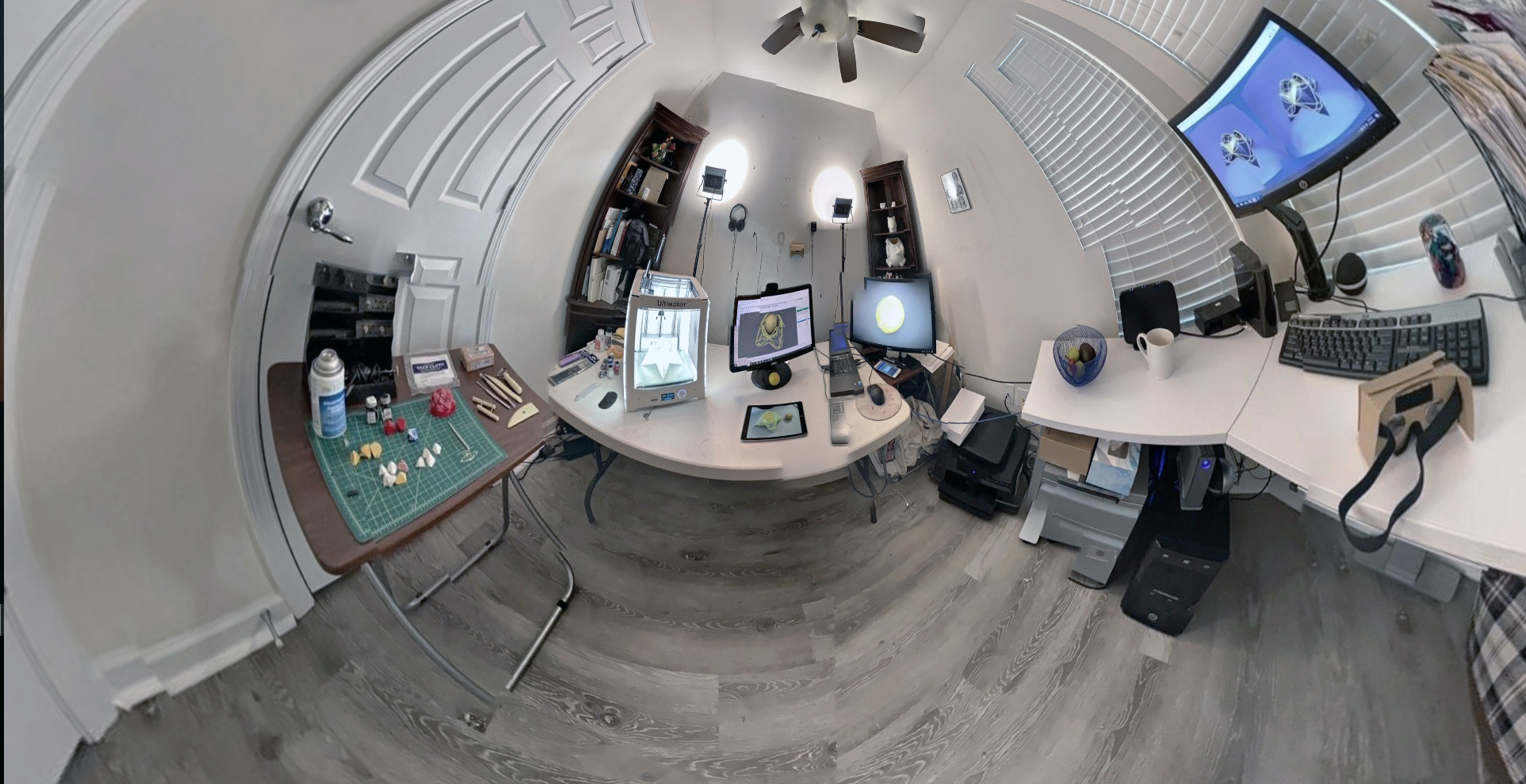For the Fall/Winter 2020 digital issue of the magazine, produced during this time of physical distancing, Prattfolio collaborated with faculty members on virtual tours of the places where they are working now. This spotlight on Michele Gorman, an architectural designer and associate professor in Pratt’s Undergraduate Architecture Department, is the second installment of the issue.
Ordinarily based in Brooklyn, Gorman works across architecture, interior design, and new media, with projects that include store design, exhibitions, and public art initiatives (recently at Pratt, Gorman designed and organized the Dinner Party and coordinated the design of the central objects—one-of-a-kind place settings—for the School of Architecture’s Mistresses of Pratt event inspired by Judy Chicago’s The Dinner Party).
On the space
This summer, after the pandemic moved much of work and life online, Gorman and her partner, artist and designer Seth Lamberton, relocated their studio from Brooklyn to Fort Mill, South Carolina. (With a four-year-old daughter, Khora, the move brought them closer to family who could lend a hand while school was out.) “We took the essentials from our studio in Sunset Park, such as our Ultimaker 3-D printer, some Google Cardboards for mobile VR, cameras, laptops, Wacom tablets,” used for drawing, “and studio lights for online teaching,” Gorman says. “As a result of our loss of resources in Brooklyn, such as access to shops and studio space, we had to rethink our practice, the scale of our work, and materials output. Merging the physical and the digital accelerated innovation and made us rethink the intersection of our limited tools and resources.”
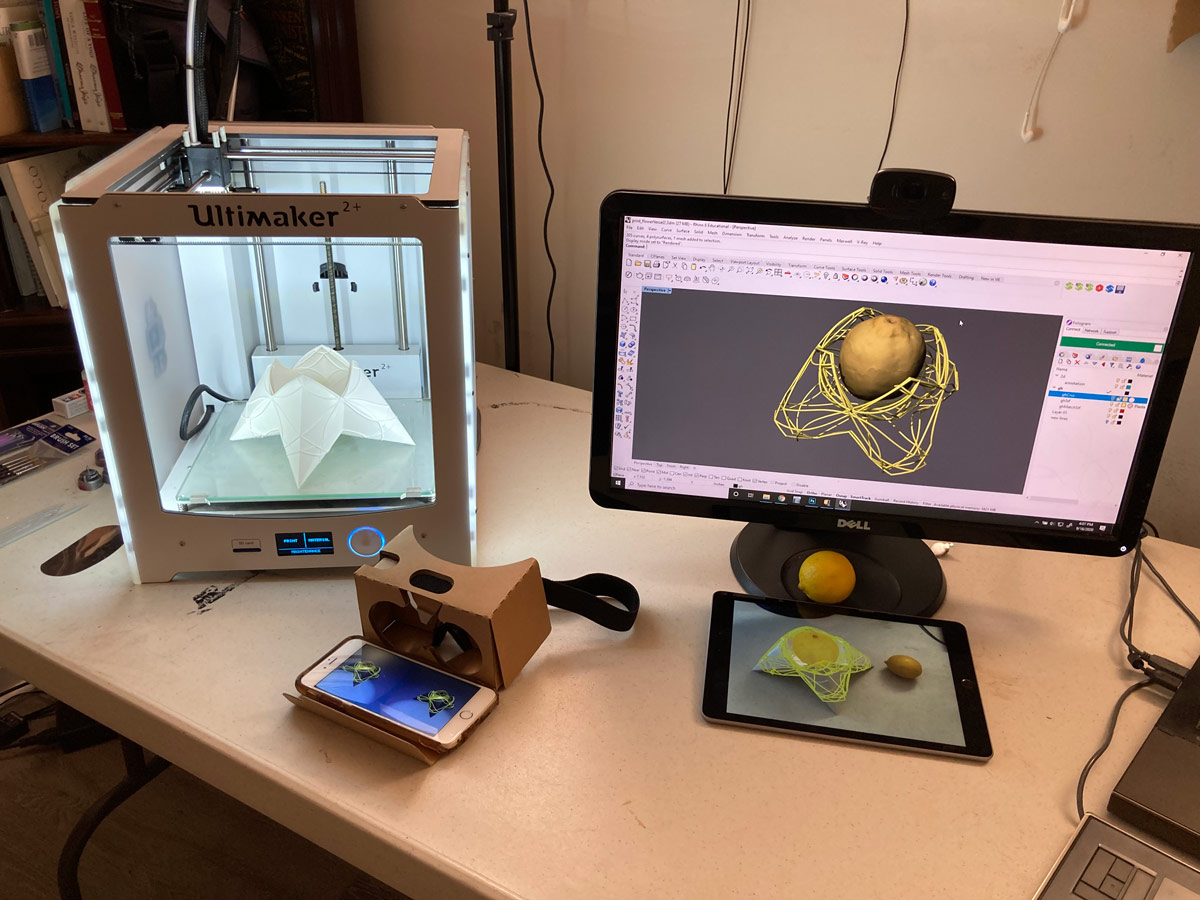
A corner of Gorman’s remote workstation, with Ultimaker, Google Cardboard holding a smartphone with VR imagery, and tablet and desktop screen offering two views of a mixed-reality object. Image courtesy of Michele Gorman
This reappraisal of how work would happen in a new environment also informed the way Gorman was adapting her thought around teaching at Pratt, which extends from PreCollege to fifth-year Architecture degree-project studios. “As a digital architect in higher architectural education at Pratt, I teach photogrammetry, interactive gaming engines, immersive 360 AR and VR platforms, large- and small-scale digital fabrication, and 3-D modeling,” Gorman says. “Moving my work into my domestic space, I started to find opportunities intersecting these workflows and incorporated them into online teaching.”
Gorman looked for ways that design practice within digital-physical hybrid spaces and home environments could enhance designers’ experiences. “My question was, how could I make online learning and making from home an asset? How could [students’] ideas move out of the studio and be shared globally to engage larger design communities? How can the virtual and the analog begin to intersect?” Gorman explains. Meanwhile, “in the collapse between studio and home, life productively gets in the way. Your family is involved in your work,” and as colleagues, classmates, and educators begin collaborating from their unique, disparate spaces, “your locale moves front and center, encouraging global cultural exchanges.”
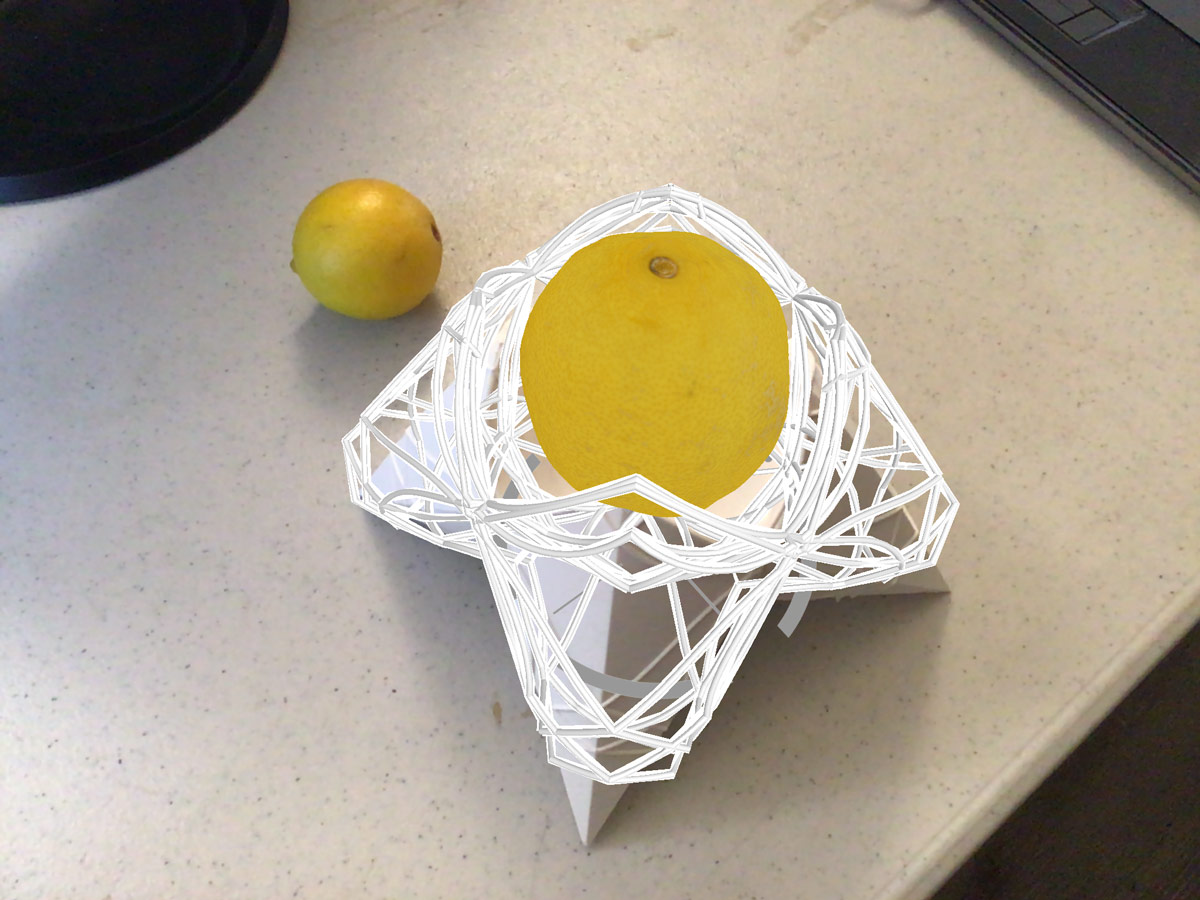
A mixed-reality vessel created by Michele Gorman and Seth Lamberton. Image courtesy of Michele Gorman
Three significant objects
A lemon, a 3-D printed vessel, and a manifestation of the two united in augmented reality—these are both the elements of an artist project and a means to think about physical-digital work in preparation for a hybrid, part-virtual, part in-person, teaching semester this fall.
“The idea of this mixed-reality object is to create an object that acts as a portal to the artist space,” Gorman explains. “Done in collaboration with my partner Seth Lamberton, the object will act as a trigger to conjure something from the artist’s studio. We ask, how can an object create a connection between distributed spaces and become a magical vessel?”
Utilizing photogrammetry, AR, and the physical printed vessel, Gorman “played with ambiguities between the real and the virtual.” And, she adds, “augmented reality allowed me to test the design object at multiple scales and color interactions.” Gorman also explored how publishing tools such as the digital platform Sketchfab have the potential to enable broader cultural exchange, beyond the studio and, for her students, beyond Pratt.
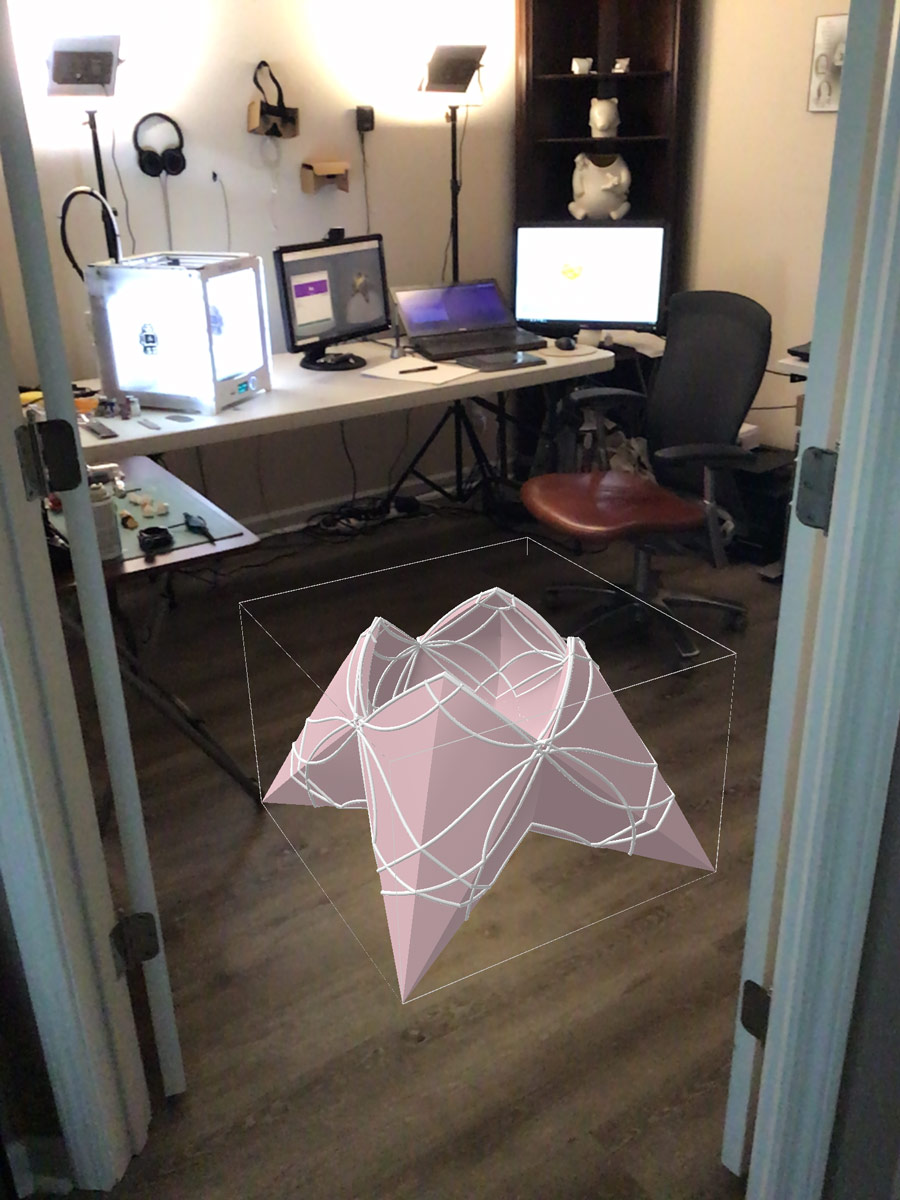
Playing with the scale of the mixed-reality vessel. Image courtesy of Michele Gorman
What’s developing
What will the studio of the future look like? In the wake of COVID-19, Gorman and her colleagues continue to interrogate this question, with a more inclusive approach to the teaching and practice of architecture at the center. “The global pandemic has challenged the architecture design studio to rethink its culture,” Gorman remarks, adding that conversation around that culture “has also revealed inequities and barriers. How can the studio become more radically inclusive and responsive to the moment?”
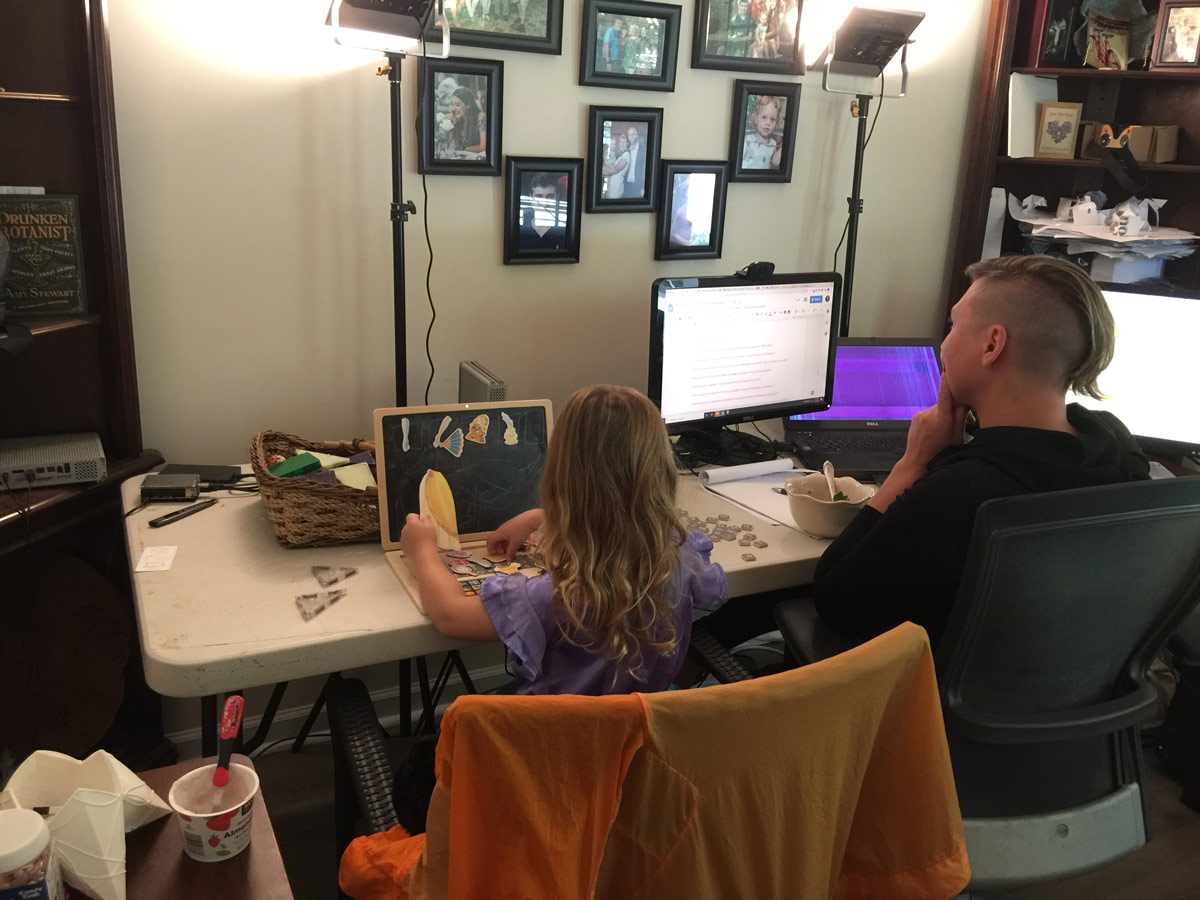
Gorman and daughter Khora coworking in the remote studio. Photo courtesy of Michele Gorman
To address these questions at Pratt, alongside School of Architecture faculty Meredith TenHoor, Eva Perez de Vega, and Scott Ruff and Dean of the School of Architecture Harriet Harriss, Gorman has developed the database Towards an Equitable School; the site houses “resources for reflection, action, and change” for the School of Architecture community, including information on peer-to-peer mentoring and student-led inclusivity initiatives. Meanwhile, Gorman is collaborating with new colleagues in South Africa and Australia on a chapter for The Routledge Companion to Architectural Pedagogies of the Global South(forthcoming in 2021, edited by Dean Harriss and Ane Gonzalez Lara, assistant professor of architecture, along with Ashraf Salama of the University of Strathclyde in Scotland), titled “The Radically Inclusive Studio.”
